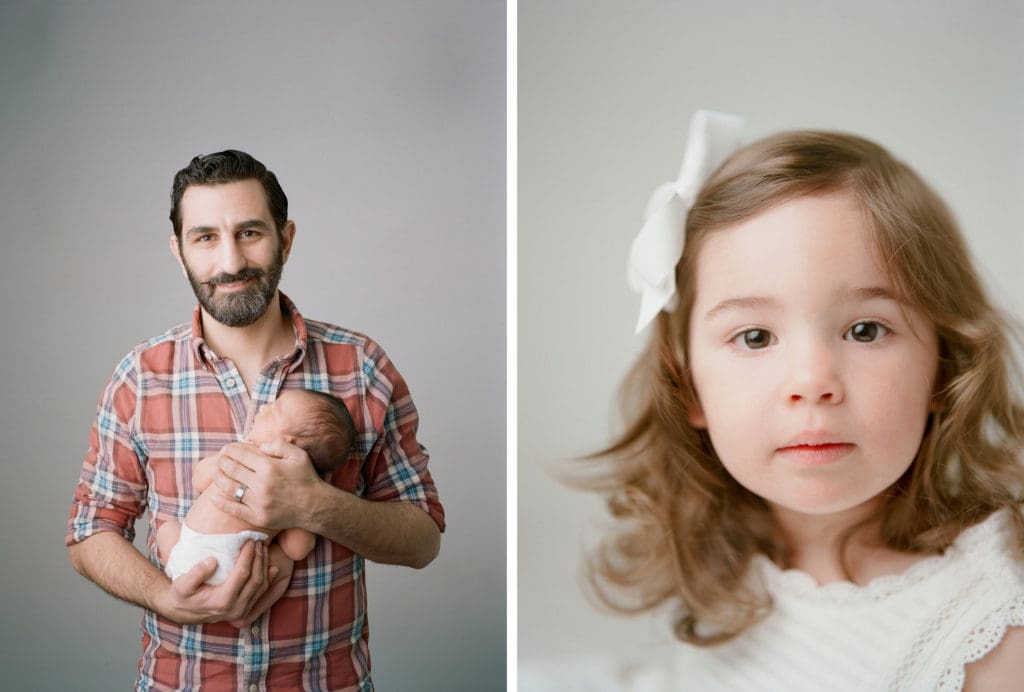Tips + Techniques
When digital photography first came along, it was believed that film photography would wither and die. Over the past several years, however, film has been making a huge comeback. Film manufacturers are reporting increases in demand, and companies like Kodak Alaris are even bringing back film stocks that were once discontinued!
Photographers of all genres are trading in their digital gear for film cameras, and I’m happy to share that film photography, once written off as a dying art, is alive and well. I’m just one of the many photographers who made the decision to return to film and use it exclusively for both personal and professional work.
Why?
To me, the way film reads light, the tones, the entire process of shooting it is just so different from working with digital cameras. It’s just really, really fun and the results are beautiful.
If you are curious and want to give it a try, here are five things you need to know before shooting your first roll.
1. Shooting with film is easier than you might think.
I know many photographers who are interested in film but are nervous about giving it a try. Not being able to look at the back or your camera and being stuck at a set ISO (the film’s box speed) seems harder than shooting digitally, not to mention a little scary.
But to start, just load it into your camera and set your ISO to the number that is on the box, and meter for your shadows. You’ll want to experiment shooting a variety of lighting scenarios to see how the film picks up on different environments.

Shot with Kodak Portra 800 film (left) and Kodak Portra 400 film (right). In the case of these two photographers, 800 and 400 were the respectively set ISOs.
2. The exposure latitude of film is amazing.
One of the things that makes working with film so easy is its exposure latitude. With a digital camera, exposure range is pretty limited and you can easily lose detail in the highlights if you’re not careful.
With most film stocks, however, it is pretty hard to lose detail in the highlights, even when overexposed. In fact, film photographs often err on the side of one to two stops of overexposure to ensure detail in the shadows without blowing their highlights or losing any detail. (Slide film such as Ekatachrome 100 is the only exception to this rule.)
This kind of exposure latitude makes film incredibly forgiving.
3. Not all film stocks are created equal.
There is no universal standard for film. Each stock is slightly different, with its own color profile and its own level of contrast and grain. I call this the film stock’s “personality.”
Once you know its personality, you can choose a stock based on what you like about it. In this way, the film stock becomes your creative partner and can help you build a signature look that is specific to your work and style. How fun is that?
4. Finding film is easier than you might think.
When I tell people I’m a film photographer, the first question I’m often asked is where I buy it. The truth is, there are still a ton of places to get film.
I live in Seattle, and we have a great local store called Glazer’s that sells professional grade film stocks. If your city does not have a good camera store, you can order film online. Just make sure that you are ordering from a reputable supplier. Start your search with B&H, Adorama, Film Supply Club, Richard Photo Lab and The Find Lab.
And store your film in a cool, dark spot to keep it fresh. I keep mine in the refrigerator.
5. Rely on a professional lab to process and scan your film.
The last thing you need to know about shooting film is that choosing a professional lab is very important.
Film development and scanning is an art form in and of itself, so look for a lab that has experience working with film to ensure that yours is processed with fresh chemicals on good equipment by a well-trained staff.
A professional film lab will also be able to help you analyze your negatives, problem-solve when you have questions about your results and help guide you to becoming a better film photographer.
Sandra Coan is an industry educator and award-winning newborn and family photographer specializing in studio portraiture, artificial lighting and fine-art film photography. She last wrote about common misconceptions of shooting natural portraits with artificial light.
RELATED LINKS
Are Studio Portraits Making a Comeback in the Photo Industry?
Compare & Contrast: Breaking Down Two Popular Editing Styles






